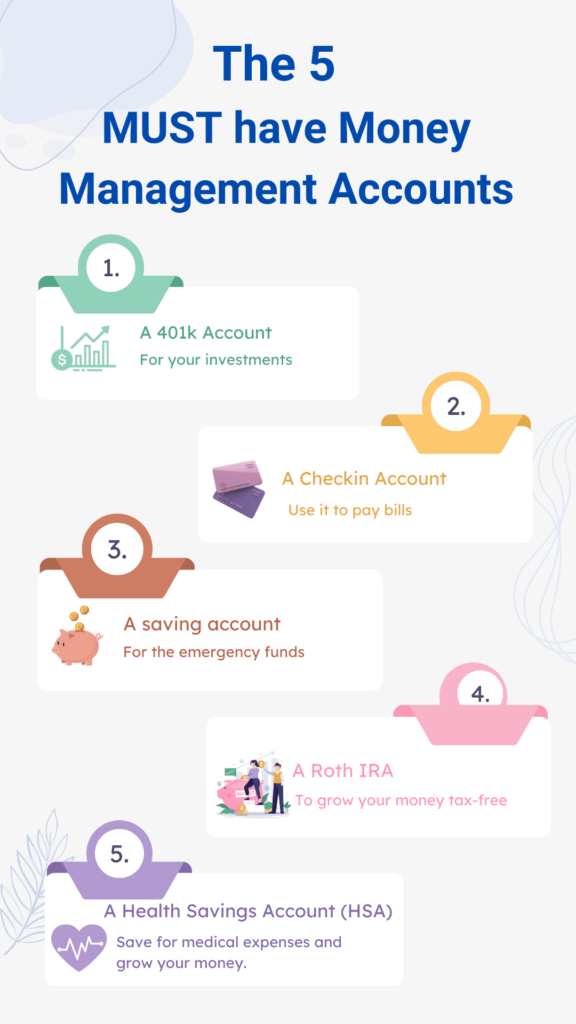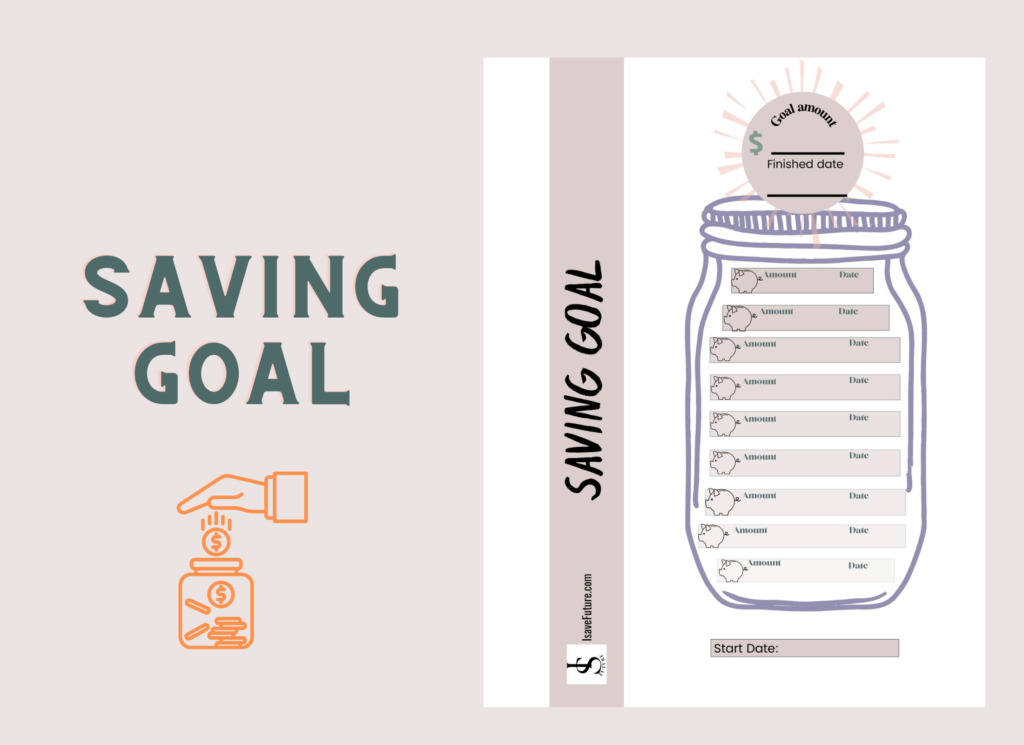Achieving financial freedom requires having the five best money management accounts. These accounts can help you grow your money; some even offer tax advantages such as exemptions and deferrals. They are worth considering.
I utilize four of the five accounts, but unfortunately, I do not qualify for one. I consistently invest 15 percent of my income into my 401K account. This approach has enabled me to prioritize myself financially, resulting in significant growth. Furthermore, I ensure to max out my Roth IRA account annually. This is my favorite account because I won’t have to pay taxes when I withdraw in retirement.
Tax-advantaged investment accounts are available in two forms: tax-deferred and tax-exempt.
Tax-Deferred Accounts
When you contribute to a tax-deferred account, you can benefit from immediate tax deductions on the entire amount. However, any future withdrawals from the account will be subject to taxation at your ordinary-income rate.
Tax-Exempt Accounts
Tax-exempt accounts provide significant tax advantages in the long run, as withdrawals during retirement are not subject to taxation. However, contributions are made with after-tax dollars. There is no immediate tax benefit.
1. The 401k.
Many employers offer a retirement savings plan known as 401(k). When you enroll in this plan, a portion of your paycheck is automatically deposited into the account. Some employers may even offer a matching contribution up to a specific limit. This means free money for your retirement savings. You can choose to invest the money yourself or have a third-party service hired by your employer make investment decisions for you.
If you want to prioritize your savings, enrolling in your employer’s 401k plan is essential. This is particularly beneficial if you have difficulty saving or investing or lack investment knowledge.
401k plan uses the dollar-cost averaging principle, where a fixed amount is invested from your paycheck regardless of share price, reducing market timing risk.
In addition, dollar cost-averaging removes your emotion from your investing and prevents you from doing something that can hurt your portfolio. For instance, selling when the market is down and buying when the market is up. Some people panic when the market falls, so they sell their investments at the wrong time.
Your employer may provide you with two options for your 401k: a Traditional 401k or a Roth 401k.
The Traditional 401k
When you have a traditional 401(k), your contributions are taken out of your gross income before income taxes are applied. This reduces your annual taxable income by the full amount of your contributions, which you can then report as a tax deduction. However, when you withdraw money during retirement, you must pay taxes on contributions and investment earnings. This is a tax-deferred account.
Roth 401k.
When you have a Roth 401(k), the contributions are deducted from your income after taxes. This means the contributions are taken from your pay after deducting the income taxes. Therefore, there is no tax deduction for the year of the contribution. However, when you withdraw the money during retirement, you do not have to pay further contributions or investment earnings taxes.
2. A Checkin Account
This is an essential money management account that you should use for bill payments and purchases. Maintaining enough funds for expenses is recommended while ensuring not to exceed the balance and incur overdraft fees.
3. A saving account
A savings account is a great money management choice for your emergency fund or short-term expenses. If you are saving for a house down payment, this is the perfect place to save that money. A saving account provides easy access to your funds but doesn’t grow them. However, some credit unions offer fair interest rates without holding onto your money.
4. A Roth IRA
A Roth IRA is an Individual Retirement Account where you contribute with after-tax dollars. Although there are no tax benefits in the current year, the contributions and earnings grow tax-free. You can withdraw these contributions and earnings without penalty or tax after reaching the age of 59½ and once the account has been open for five years.
5. A Health Savings Account (HSA).
This savings account allows you to save pre-tax money to pay for qualified medical expenses. You can invest the money in the account without paying taxes on the earnings. When you decide to use the fund, you don’t have to pay taxes on the withdrawals as long as it is used for medical expenses. Therefore, you don’t pay taxes on contributions, earnings, or distributions used to pay for qualified medical expenses. It could not get any better than that!
Your HSA funds are always safe, as any unused amount can be rolled over annually. You may inquire with your health insurance provider regarding HSA availability, or if you meet the requirements, you can set up an account through a brokerage.
- To contribute to an HSA, you must have a High Deductible Health Plan.
- For 2023 the minimum deductible to qualify for an HSA: is $1,500 for individuals and $3,000 for families.
- The HSA contribution limits for 2023 are $3,850 for individuals and $7,750 for families. Those 55 and older can contribute an additional $1,000 as a catch-up contribution.
Here you have it! These are the five accounts that can help you reach financial freedom. Each account serves a unique purpose and is a great money management vehicle. These are the account I use to manage my money, except for the HSA because I don’t qualify. I encourage you to learn more about how you can use these accounts to your advantage, and for that, I have created a free printable to help you. I also want to hear from you. Which account are you using to manage your money? I will love to know.

Investing information provided in this blog post is solely for educational purposes. Neither IsaveFuture nor its subsidiaries offer advisory or brokerage services, and we do not recommend or advise investors to buy or sell specific stocks, securities, or other investments.



